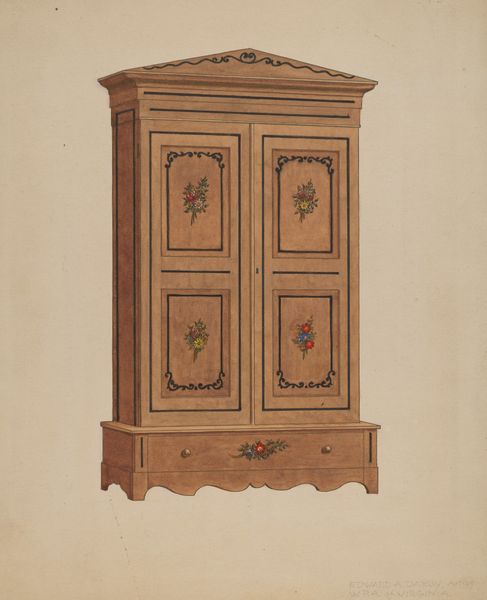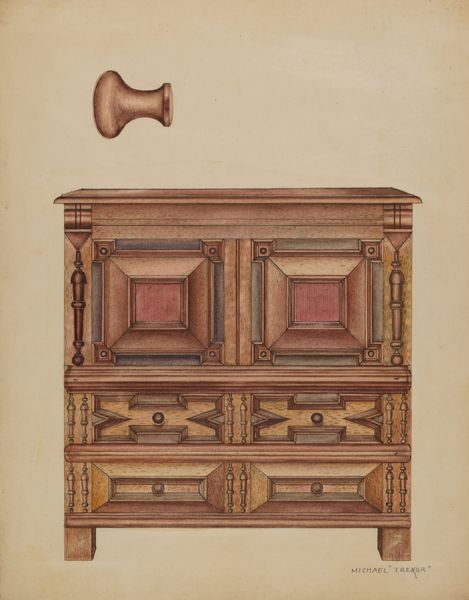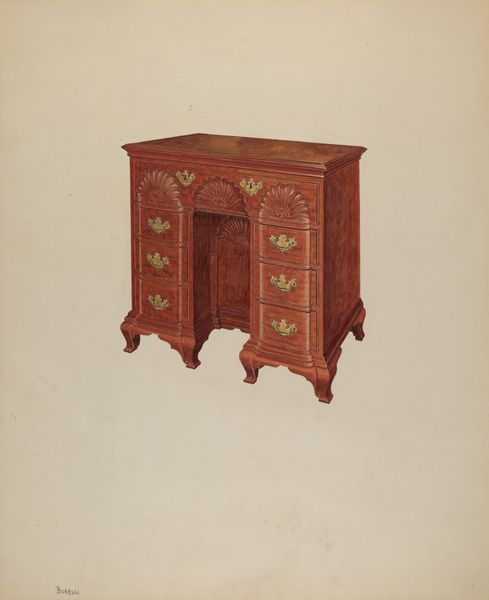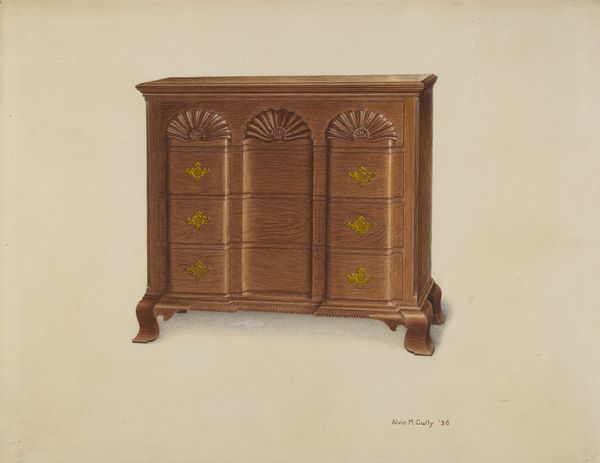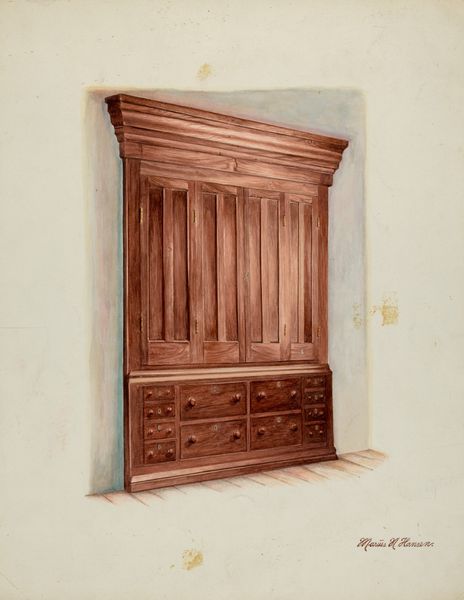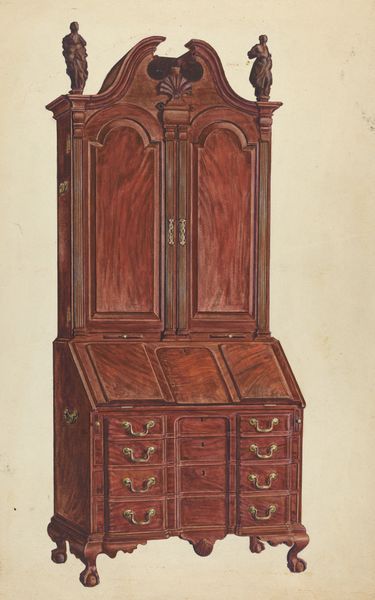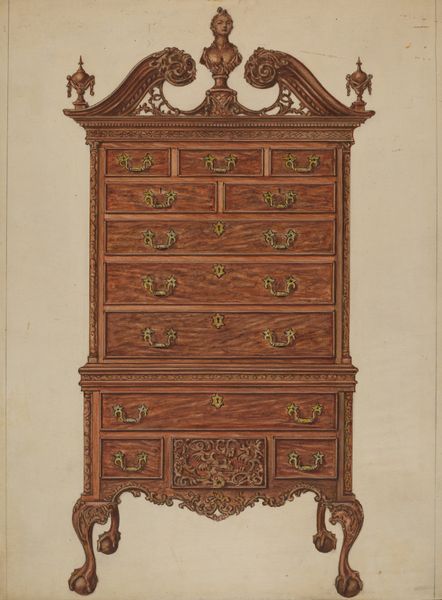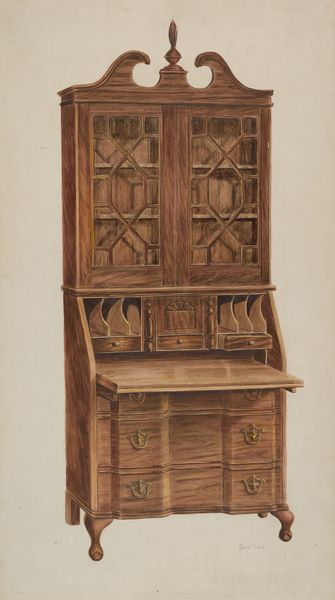
drawing, watercolor
#
drawing
#
watercolor
Dimensions: overall: 30.1 x 23.1 cm (11 7/8 x 9 1/8 in.) Original IAD Object: 34"x36"x20 1/2"
Copyright: National Gallery of Art: CC0 1.0
Curator: This delicate watercolor and graphite drawing, entitled "Dressing Table," was completed in 1936 by Michael Trekur. Editor: My first thought is the incredible detail. It’s so precise it almost feels like a blueprint, but warmer somehow, less clinical. Curator: It invites a question of utility versus aspiration. Dressing tables during this era weren’t simply functional objects. They held immense social weight. To own such an ornate item signaled a certain societal position and even gender role expectations. The level of craftsmanship itself is a statement. Editor: Exactly! I see the construction itself speaking volumes. Look at how the wood grain is rendered. Each drawer, each leg, meticulously planned and brought to life with clear intent to portray craftmanship as an integral element. The materiality speaks to luxury, consumption and a specific kind of aspirational design. The choice of ornamentation isn't arbitrary, right? Curator: Not at all. The recurring shell motifs for instance—both visually pleasing and rooted in historical traditions—suggest an interest in classicism. The way these emblems interlock, tells us something about the intended user: femininity was not to be regarded as light and unimportant but structurally robust and interwoven within systems of status. Editor: So we can't ignore labor here, it takes a real understanding to handle those kinds of material decisions. Curator: Definitely not. Even in a 'simple' object like a dressing table, the process mirrors a narrative of privilege and position for women. We consider also that for women of colour that these signifiers of wealth and position were deliberately placed out of reach. It encourages a dialogue about inclusivity, representation, and identity. Editor: Yes, viewing the material choice and ornamentation within a wider socio-political context completely reframes our perception of it. I can now picture all of the resources, and the labor that made it come into being. Curator: Absolutely. It becomes more than just a piece of furniture; it's a reflection of intertwined historical, cultural, and personal meanings. Editor: I am now left wondering, where has this beauty travelled to, and what is its social biography through these movements.
Comments
No comments
Be the first to comment and join the conversation on the ultimate creative platform.

